
Why would something like this not work?

wig wrote:India to ramp up amphibious capabilities with four warshipsThe Ministry of Defence (MoD) had re-issued a request for proposal (RFP) to Indian private sector shipyards in September to build four amphibious assault ships, also called the Landing Platform Docks (LPD) in naval parlance. Each of these will approximately cost Rs 6,000 crore and are expected to deliver over the next 10 years.
Each of these ships will be anything between 35,000 and 40,000 tonnes. The Indian shipyards have been asked to locate their own foreign collaborator. “The bids have come in,” a source in the Navy said. The RFP was sent to ABG, Larsen & Toubro (L&T), and Pipavav Defence and Offshore Engineering.
The successful private shipyard and its foreign collaborator will be given order for two such ships and the two others will be made by the MoD-owned Hindustan Shipyard Limited, Visakhapatnam, at the same price being paid to the private builder.
This signals an important change in the long-term strategic plan as this will be huge jump over the existing capability of launching offensive sea-borne. The LPDs are essentially the first step towards increasing capability to launch “out-of-country operations”.
The LPDs are essentially a modern-day sea-based version of the Roman epic “Trojan horse”. Each carries, in its huge lower deck, hundreds of Indian Army troops with tanks, vehicles and cargo. Such a ship can deliver men and equipment near a sea beach and does not need a berthing dock, hence providing the option for landing thousands of troops near a spot chosen to attack.
The size of the LPDs indicates the Indian Navy’s growing amphibious warfare capacity. As of now, the biggest such variety of vessel is INS Jalashwa, a 16,900 tonne ship. Another five warships classified as Landing ship tank large (LST-L) are some 5,600 tonnes each, another four ships are just 1,100 tonnes and lastly the smallest are 650 tonnes and six of these are in service.
Forces that move across sea are referred to as “amphibious task force”. At present, India has the capability to move a Brigade, some 5,000 men, using the lone LPD, INS Jalashwa, along with a fleet of five smaller 5,600-tonne (LST-Ls) each of which can carry 10 tanks, 11 combat trucks and 500 troops.
Each of the new LPDs will have three times the capacity and have multi-role helicopters, including heavy lift helicopters to provide even greater flexibility.
Foreign shipbuilders offering such ships include DCNS of France, Germany’s ThyssenKrupp Marine Systems, Fincantieri of Italy, South Korea’s Hanjin Heavy Industries & Constructions Co and Navantia of Spain.
India has sought a vessel of 213 metre, endurance at sea for 45 days, the vessel must be able to house combat vehicles (including main battle tanks, infantry combat vehicles and heavy trucks on one or more vehicle deck), and the vessel should be able to undertake all-weather operations involving heavy lift helicopters of up to 35 tonne.
http://www.tribuneindia.com/news/nation ... 29035.html
Developing indigenous capabilities is not about competition but about safeguarding your political and military interests, not to mention technological and economic benefits it may accrue. Importing 'proven' systems is not the only way to make it 'worth' your while.brar_w wrote:brar_w wrote:You can't scale an LHD by nearly a third and still have a competitive design that leverages your risk reduction work due to it being a proven ship. Without that they are hardly competitive to Juan Carlos types that are proven designs for their classIn an era where you have to formally compete with others in the open marketplace if your design/proposal has an inherently larger risk attached to it, compared to the competition that risk better be worth it, otherwise you would end up on the loosing end of the competition.JTull wrote:Your definition of proven designs means only one thing : be an importer of yesterday's technology. Without taking risks we'll never be at the cutting edge.
My argument was towards competing foreign designs and why the US designs are at an inherent disadvantage to other foreign designs for the spec's being talked about. It had absolutely nothing to do with indigenous designs and choosing them over foreign designs. Someone brought up that US should have also competed and I responded that they would most likely not have been competitive with the ships they have in production and by submitting designs that were not in production, they would have made them inherently weak compared to the competition.JTull wrote:
Developing indigenous capabilities is not about competition but about safeguarding your political and military interests, not to mention technological and economic benefits it may accrue. Importing 'proven' systems is not the only way to make it 'worth' your while.
By your argument, we should not have gone with IAC-1 design or even attempted to build one as the proven 'Illustrious' and 'Invincibles' of the world were available. But, thankfully IN learnt very early from the Viky acquisition fiasco. A floating ship is not equivalent to a proven one. Our northern neighbours could be using Varyag as a capability demonstrator to build upto 3 new carriers simultaneously. What's wrong with IN using Jalashwa in an equivalent way?
Because we will need a well deck with stowage for landing craft, another storage area for vehicles from tanks to trucks which will all need to be driven into the ship RO-RO style, and not to mention accommodation for about 900-1000 soldiers along with enough room for all their ancillary equipment, armories for storing all the ammunition needed to fight for at least several days if not weeks (this includes everything from sidearm carried by soldiers up to bombs and rockets used by gunships / CAS fighters carried onboard.Shreeman wrote:Stowage about VikAd.
Why would something like this not work?
Now this is good work!Shreeman wrote:Stowage about VikAd.
Why would something like this not work?
Not a good idea because such a mix would certainly reduce the radius of ops. Just getting the boat to host more LCAs does not solve the problem - in fact I think it makes it worse.Why would something like this not work?
Now do the same on the deck - with war time numbers.Why would something like this not work?
The vessel is the third in the series of eight LCUs being built by Garden Reach Shipbuilders and Engineers Ltd (GRSE).
Launching of the vessel which is designed in-house and built by GRSE for the Indian Navy is yet another milestone in India's quest for self-reliance in sophisticated shipbuilding, an official statement said.
...
The first LCU was launched on March 12, and the second on September 23 last year.
The ship will be fitted with an advanced Integrated Platform Management System for remote control of propulsion, auxiliary and power generating equipment.
Two CRN-91 indigenous 30 MM guns to provide fire support during operations will also be fitted onboard.
The ship can be deployed for maritime security, beaching or un-beaching, humanitarian relief operations and evacuation from distant islands, search and rescue operations and peace-keeping missions.
The geometry of vikAd says you gain 1 NLCA by replacing 3 29ks (in peacetime, some would be KUBs), and doing this twice, once below deck, once on the deck gives you 8 NLCAs. Frees up 6 29ks (who can be used elsewhere). In CAP alone that would be a huge difference. You still keep 24 29k max. capacity.NRao wrote:Now do the same on the deck - with war time numbers.Why would something like this not work?
IIRC, you will gain between 2-3 LCAs in all - if at all.
Since I brought up US, I'll gladly concede your point being a valid argument in this context.brar_w wrote: Someone brought up that US should have also competed and I responded that they would most likely not have been competitive with the ships they have in production and by submitting designs that were not in production, they would have made them inherently weak compared to the competition.
Samudragupta wrote:http://www.tribuneindia.com/news/nation ... 29035.htmlwig wrote:India to ramp up amphibious capabilities with four warships
India may be getting serious abt Balochistan...
Although the author/blogger successfully showcases the balance in the Kolkata, he fails to realize that the Burke's issues with the Harpoon were clearly driven by a need (or lack of) and the fact that the mission that is most critical to these ships is BMD given the threat. That has since shifted, and the ASBC has ushered in a faster push towards arming platforms to give them better capability then the harpoon. Despite of this shift the Navy has not felt the "threat to the burke's" to be significant enough to warrant a new weapon in the Offensive Anti-Surface Warfare Increment 1 program. The LRASM is strictly an urgent needs weapon for the F-18SH and the B-1 Bomber (but since it is UAI every legacy platform including the B-52 would be able to carry it if required) that DARPA had been working on for close to 5 years (seeker) and that is to be fielded in limited numbers (as stipulated in the urgent needs) by 2017-2018. The Harpoon replacement would come with the Offensive Anti-Surface Warfare Increment 2 for which there would be a full fledged competitions, with things like JSM coming to the picture (Kongsberg showcased a vertical launched JSM last year) and talks of a supersonic tomahawk and what not. That would be the large scale competition to replace the legacy weapon that is seriously outclassed by threats and competition yet still remains a competent weapon given the sort of threat these ships have to prepare for in the very short term.Karan M wrote:http://snafu-solomon.blogspot.com.es/20 ... er-is.html
About balance and how the Kolkata class has it
Thanks for your detailed look but are you suggesting design doesn't allow Roll on/Roll off?maz wrote:The above data shows that build time is all over the place. It will be interesting to see how much build time reductions GRSE is able to achieve from L55 onwards since they are to be built using pre-outfitted hull blocks with most equipment installed.
A design deficiency is that these LCUs lack a Ro-Ro layout which would have permitted rapid loading and unloading of vehicles and equipment.
GRSE built LCUs are twin screw diesel ship driven by fixed pitch propeller. It has a bow ramp for Roll-on/Roll-off cargo, for handling combat equipment and vehicle and a bow thruster to assist in beaching and beach extraction.
Indian Navy chief Admiral R.K. Dhowan Monday reached Mauritius to explore new avenues of defence cooperation and strengthen military ties.
During his four-day visit, Admiral Dhowan will meet senior government and defence officials.
A defence ministry release said that Dhowan and his Mauritius counterpart will inaugurate "data flow of the information exchange" concerning merchant marine.
The release said India and Mauritius share centuries old religious and linguistic bonds.
"These bonds have strengthened over time through goodwill gestures and bilateral visits. The people of Indian origin, who comprise around 68 percent of the population, have preserved their heritage and have a strong emotional attachment with India," the release said.
It said that Indian Navy has been actively cooperating with Mauritius Maritime agencies on their maritime security needs such as hydrography surveys as also in training.
Mauritius Coast Guard ship 'Barracuda' was recently built by Garden Reach Shipbuilders and Engineers Kolkata, the release said and added that Mauritius has also placed orders for two fast-attack craft and ten fast-interceptor craft.
Not really bothered about putting down rival or competing weapons platforms.. the context of the post was that it was my perception that the IN seeks balance in its platforms as versus super specialized ones. The author basically came to the same conclusion, so found it interesting (and a validation). Of course, I also think there is something "missing" in the Kolkata that it seems to have a lot of unoccupied real estate and only 32 LRSAMs.. so its pretty possible that going forward, we might see more LRSAMs/or Nirbhays. I'd push for the former.brar_w wrote:Although the author/blogger successfully showcases the balance in the Kolkata, he fails to realize that the Burke's issues with the Harpoon were clearly driven by a need (or lack of) and the fact that the mission that is most critical to these ships is BMD given the threat. That has since shifted, and the ASBC has ushered in a faster push towards arming platforms to give them better capability then the harpoon. Despite of this shift the Navy has not felt the "threat to the burke's" to be significant enough to warrant a new weapon in the Offensive Anti-Surface Warfare Increment 1 program. The LRASM is strictly an urgent needs weapon for the F-18SH and the B-1 Bomber (but since it is UAI every legacy platform including the B-52 would be able to carry it if required) that DARPA had been working on for close to 5 years (seeker) and that is to be fielded in limited numbers (as stipulated in the urgent needs) by 2017-2018. The Harpoon replacement would come with the Offensive Anti-Surface Warfare Increment 2 for which there would be a full fledged competitions, with things like JSM coming to the picture (Kongsberg showcased a vertical launched JSM last year) and talks of a supersonic tomahawk and what not. That would be the large scale competition to replace the legacy weapon that is seriously outclassed by threats and competition yet still remains a competent weapon given the sort of threat these ships have to prepare for in the very short term.Karan M wrote:http://snafu-solomon.blogspot.com.es/20 ... er-is.html
About balance and how the Kolkata class has it
India has begun negotiations with Russia to lease nuclear submarine K-322 "Kashalot" Project 971 "Pike-B", informs "Interfax" referring to a source in the Russian military-industrial complex. If the parties sign a contract until the end of 2015, the ship can be delivered to the customer already in 2018.
According to the source agency, before the submarine will be leased, it will be modernized in accordance with the requirements of the Indian Navy. Work will be performed Amur Shipyard, where now is the K-322. A total revision "Kashalot", its testing and training of Indian crew will take three years. Indian Ministry of Defence is considering the lease nuclear submarine for a period of ten years.
The fact that India is considering the possibility of renting the submarine Project 971, it became known in December 2014. Then the Indian Defence Minister Manohar Parrikar said that the Defense Ministry is considering two options: the extension of the lease of the submarine "Chakra" (K-152 "Seal") Project 971 or rent the second ship of the "Pike-B." On the timing of the final decision Parrikar then spoke.
It was also reported that the Indian military department interested in the possibility of renting a submarine "Irbis" Project 971I tab which took place in 1994. Readiness of the ship with the serial number 519 is estimated at 46-48 per cent; at the time of freezing construction in the Amur shipyard in 2011, was formed by the pressure hull of the submarine. Earlier, India declared its readiness to consider funding the completion of the submarine and its subsequent lease.
Currently, the Indian Navy submarine worth "Chakra", built in Russia under the project 971 "Pike-B." Contract on leasing the ship was signed in 2004, and its cost was about $ 980 million (it was originally set at $ 650 million). Delivery of the ship to the customer regularly delayed; the contract of 2004 it was assumed that India will "Chakra" in 2008.
K-322 Kashalot is laying at Amur shipyard since 2003, awaiting repairs and modernization. According to some insider reports, it's probably the best built hull of Pr.971, commissioned in 1989, but didn't see much service after 1998.Philip wrote:According to some reports,the sub is in reserves at the moment/under repair,perhaps ideal for modernization to bring it upto Chakra std. with improvements.This may be the fastest way to acquire a second Akula than completing the unfinished Irbis.It may also be a cheaper option.That the completion of the Irbis may also happen as Russia is revamping Soviet era N-subs whose hulls have decades of life still left in them.Every sub is a vaulable asset and modernizing and upgrading them is a cost-effective way to maintain a larger N-sub fleet.
The news is excellent if the deal is sealed asap.The IN's sub fleet is in dire straits and a second N-sun would help counter the steady increase of PLAN subs into the IOR,including their SSNs.
Arihant stirs up the ocean
Russia offers to help repair India’s Kilo class submarines
Russia prepared to modify submarines for Indian tend
India to lease second Russian nuclear submarine.
K-322 Kashalot submarine. Source: US Navy / wikipedia.org
India has started negotiations with Russia seeking to lease the nuclear submarine K-322 Kashalot ("sperm whale") of the Project 971 “Shchuka-B” Class, reports “Interfax” citing a source in the Russian military-industrial complex. If the parties sign this agreement before the end of 2015, this ship could be delivered to the customer already in 2018.
According to the news agency’s source, before the submarine is leased out, it will be modernized in accordance with the requirements of the Indian Navy. This work would be performed at the Amur Shipyard, where the K-322 is berthed today. In total, the modernization of the Kashalot, running it through all the tests, and training of Indian crew should take about three years. The Indian Ministry of Defense is looking at leasing the nuclear submarine for a period of ten years.
The fact that India was considering the possibility of renting this Project 971 submarine came to light in December 2014. That is when the Indian Defense Minister Manohar Parrikar said that his ministry was considering two options: the extension of the lease on the Chakra K-152 “Nepra” Class Project 971 submarine or renting a second ship of this project – the “Shchuka-B”. At that time, Mr. Parrikar did not mention any concrete deadlines for this decision.
It was also reported that the Indian military establishment was also interested in the possibility of renting the Project 971I “Irbis” Class submarine, which was started back in 1994. Readiness of this ship, bearing the serial number 519, is estimated at 46-48 percent. At the time the construction work was frozen in the Amur shipyard in 2011, the pressure hull of the submarine has already been formed. Earlier, India had declared its readiness to consider funding the completion of this submarine and its subsequent lease.
Currently, the Indian Navy operates the “Chakra” submarine, built in Russia based on the 971 “Shchuka-B” project. The agreement to lease the ship was signed in 2004, and is worth about $980 million (with the initial price being set at $650 million). Delivery of this ship to the customer experiences constant delays; in the contract of 2004, it was assumed that India would receive the “Chakra” in 2008.
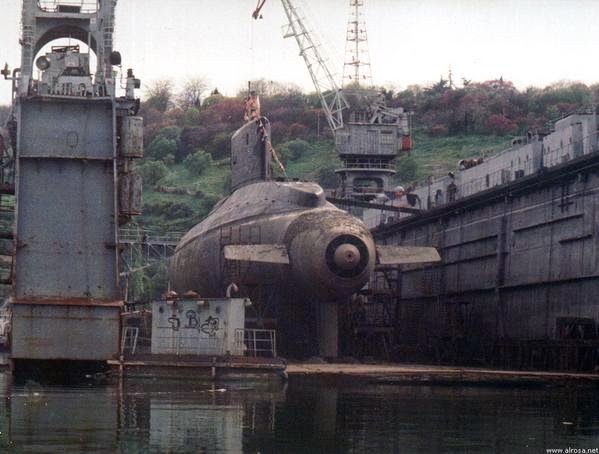
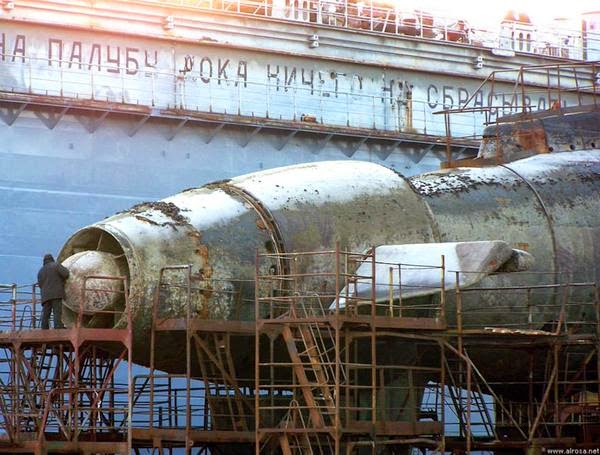
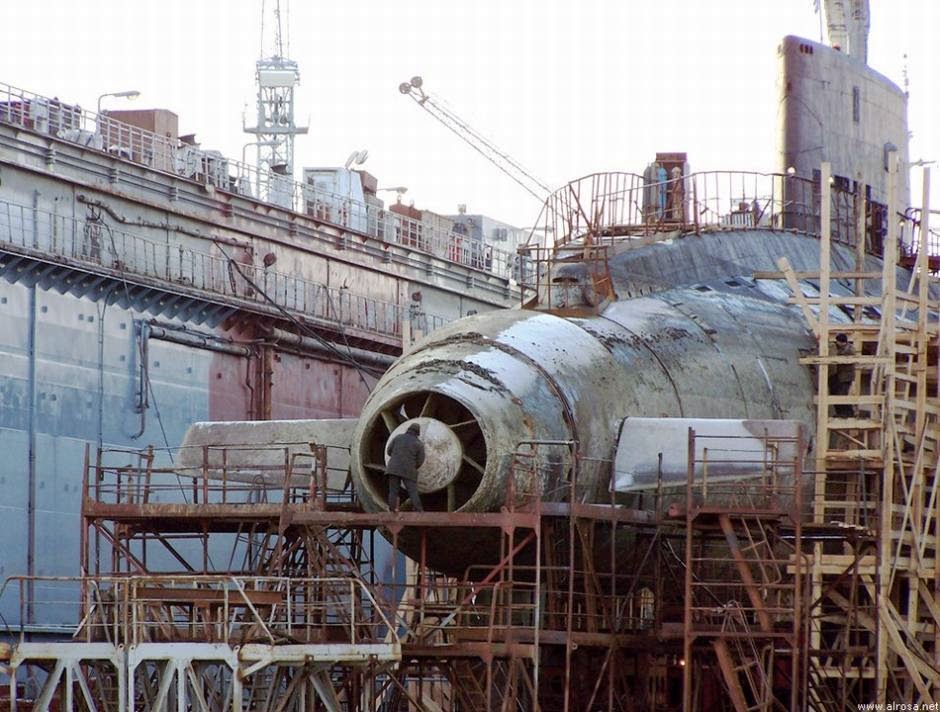
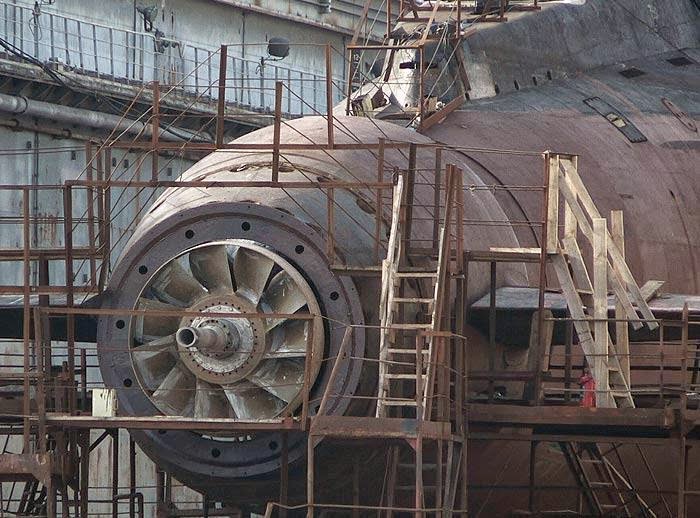
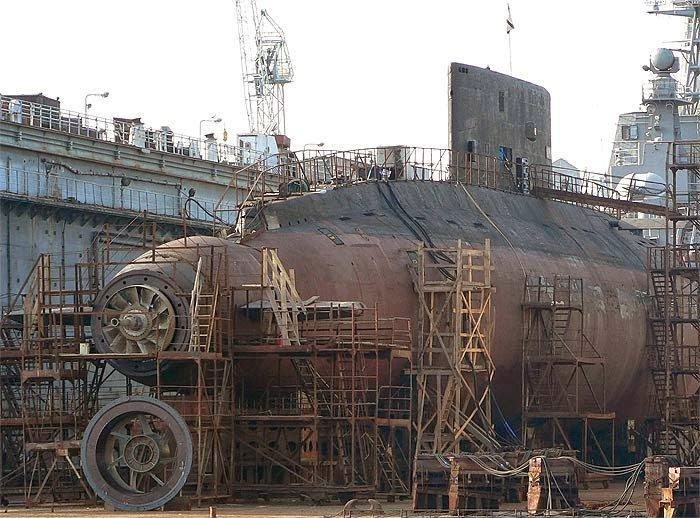
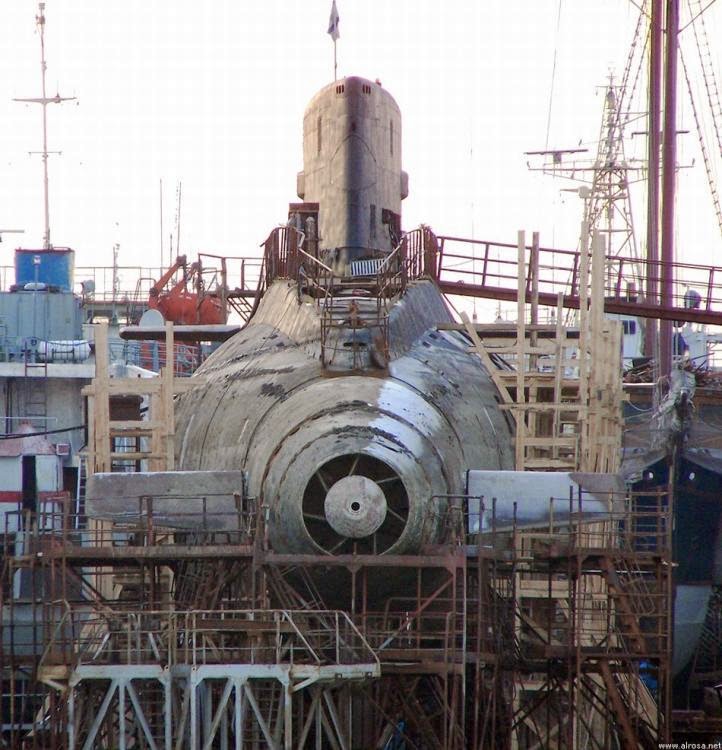
Thanks Eric but are there any <70 meter vessel that feature a through design.Eric Leiderman wrote:John roll on roll odd usually implies a through design, it fore to aft ,(or on larger vessels the means to turn on board) this ensures vehicles do not need to back up to load or unload, saving time and possible damage due to cramped parking. However ,this design would be imply time consuming load with possibly a more rapid discharge. However with only 4-6 vehicles, that is not a major issue.
Eyeballing, there is enough room in the front (between Brahmos VLS and Barak-8 VLS) for 8-to-12-cell Nirbhay-sized VLS module. As for the LRSAM VLS, there is plenty of room for another 8-cell module on the side of the current two 8-cell modules both in the front and rear (3 x 8-cell modules front and rear). That would increase the capacity to 48 from the current 32 LRSAM load.Karan M wrote:...Karan M wrote:http://snafu-solomon.blogspot.com.es/20 ... er-is.html
About balance and how the Kolkata class has it
Not really bothered about putting down rival or competing weapons platforms.. the context of the post was that it was my perception that the IN seeks balance in its platforms as versus super specialized ones. The author basically came to the same conclusion, so found it interesting (and a validation). Of course, I also think there is something "missing" in the Kolkata that it seems to have a lot of unoccupied real estate and only 32 LRSAMs.. so its pretty possible that going forward, we might see more LRSAMs/or Nirbhays. I'd push for the former.
...